Much of Japan’s modern architecture is functional and sterile but last week while riding around my local neighbourhood of Sekiguchi in Bunkyō (文京区), Tokyo I came across a piece of contemporary architecture that can only be described as fantastical. It compelled me to stop and take a closer look…
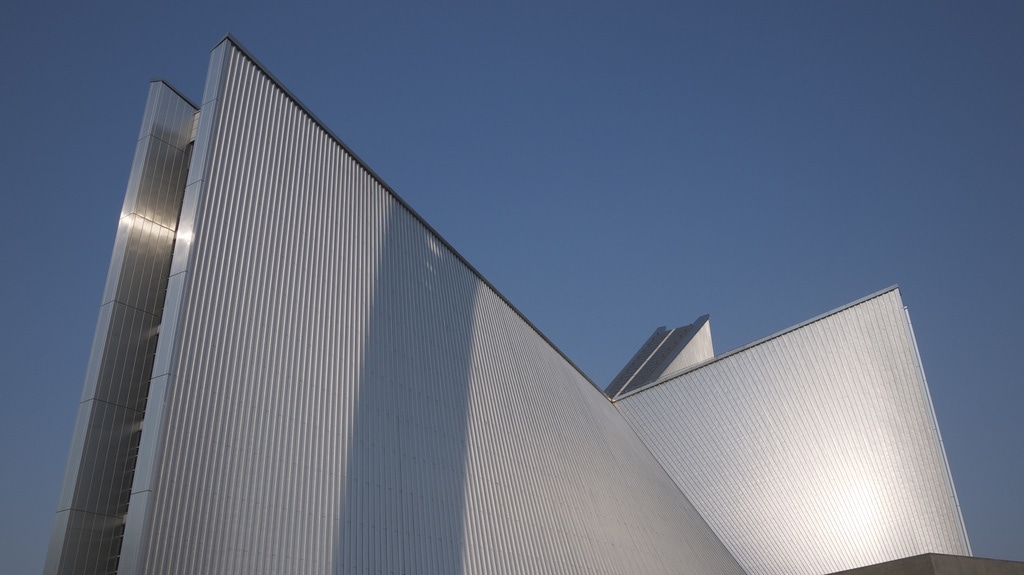
Shimmering in the afternoon sunlight against a solid blue sky the shape of the building is hard to describe. Technically speaking it consists of eight hyperbolic parables (curved walls) that rise almost vertically from a diamond-shaped concrete base to form a Latin cross at peak of the roof.
St. Mary’s Catholic Cathedral (東京カテドラル聖マリア大聖堂) is about as far from ordinary as you can imagine in the context of the usual Gothic piles we’re familiar with.
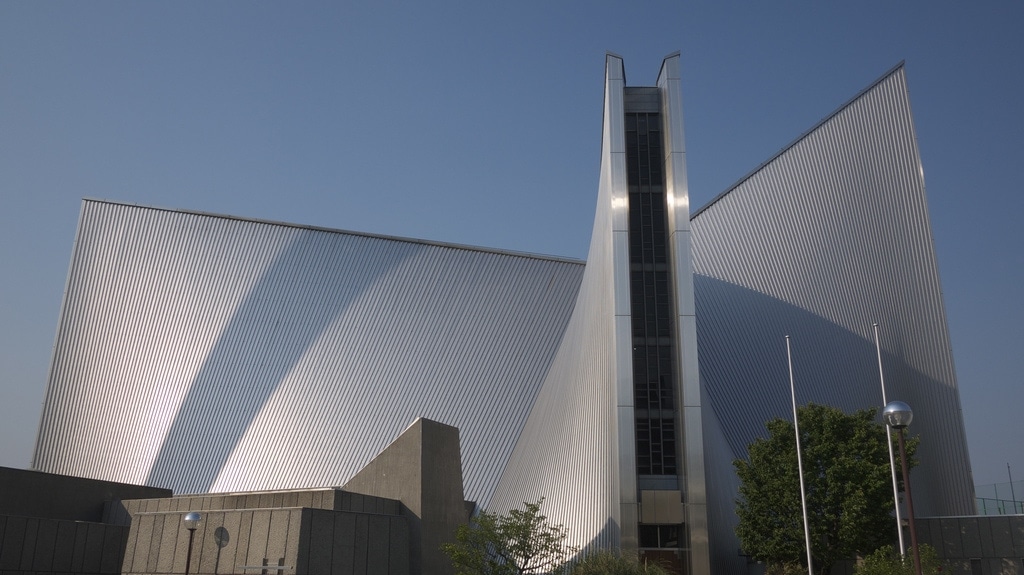
While the extreme angles and aluminium skin make it appear to have just landed in this sleepy corner of Tokyo it was actually built in 1964 by Kenzō Tange (丹下 健三), one of the most significant architects of the 20th century, who combined traditional Japanese styles with modernism and the metabolist movement (メタボリズム).
Light is able to enter the cathedral at the intersection of the four main facades through windows which run the full 40m height of the building and continue across the roof forming an illuminated cross (reminiscent of Tadao Ando’s Church of Light in Osaka).
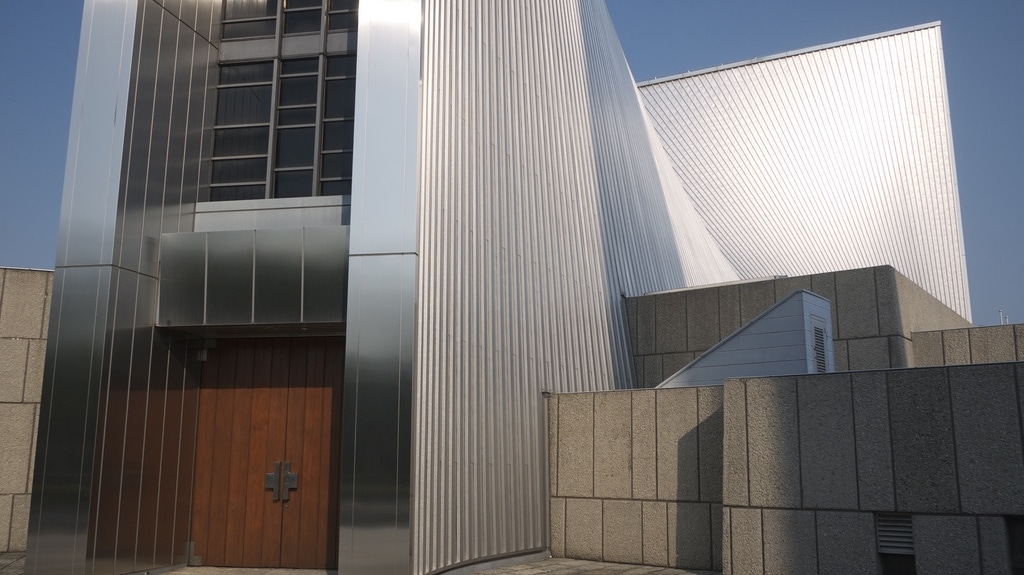
A simple wooden door marks the main entrance.
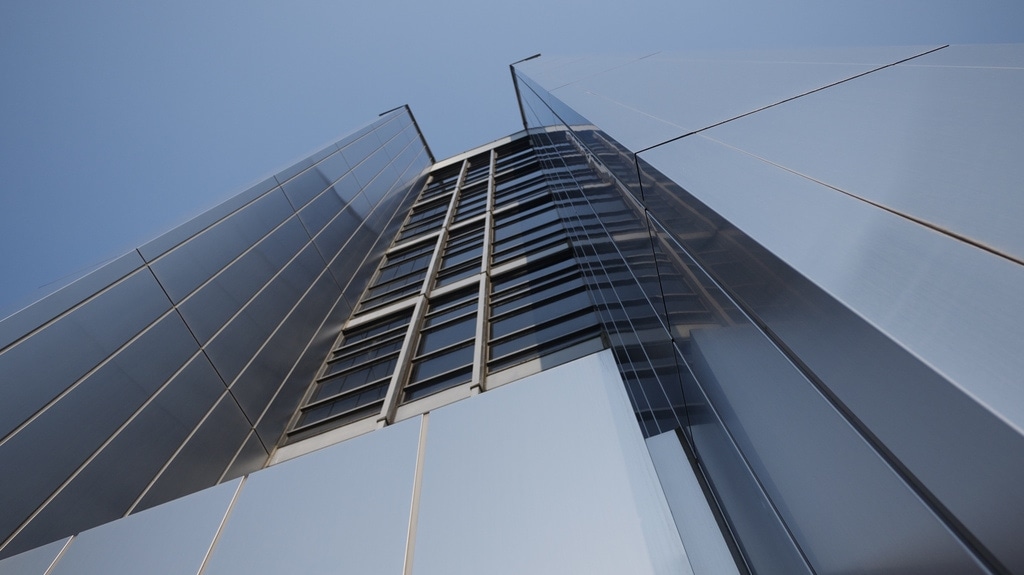
Take a look at Google Maps to see what the building looks like from above.
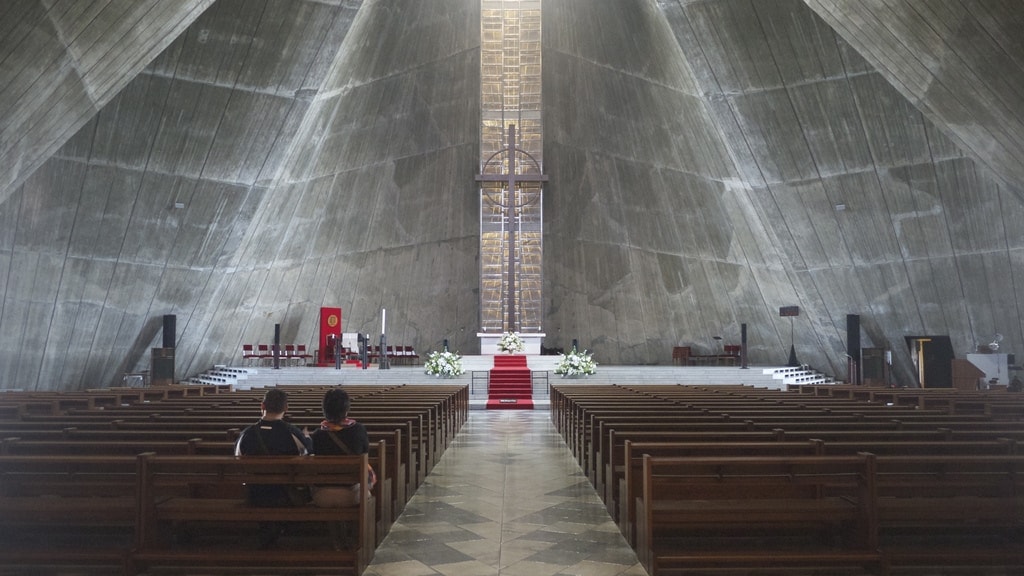
In stark contrast to its gleaming shell, the interior is something altogether different. Unpolished cast concrete walls rise to their zenith with a lightness unbecoming of their enormous weight.
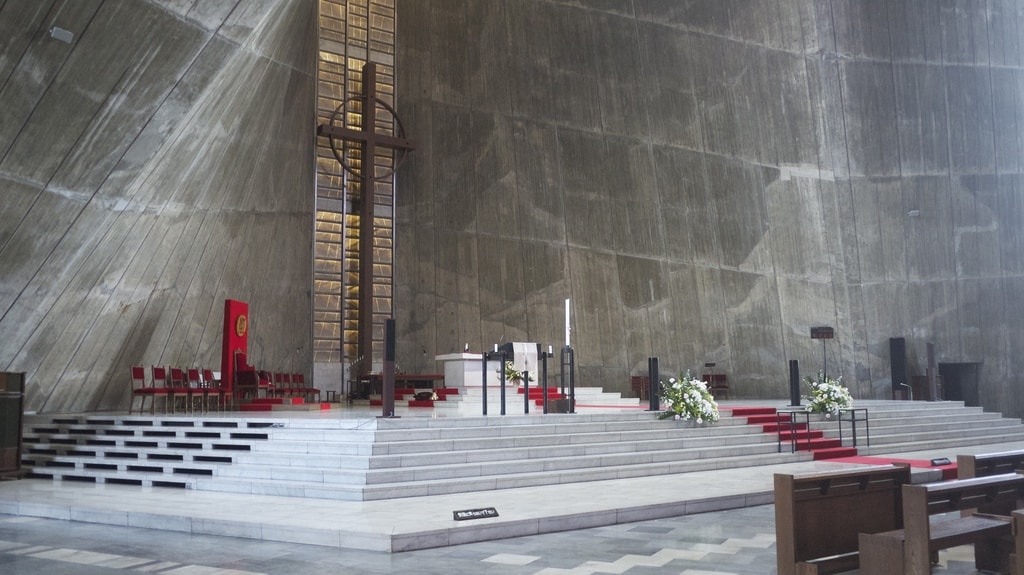
In accordance with the Japanese concept of Wabi-sabi (侘寂) the aesthetic could be described as one of beauty that is “imperfect, impermanent, and incomplete” in its conspicuous roughness, simplicity, and austerity.
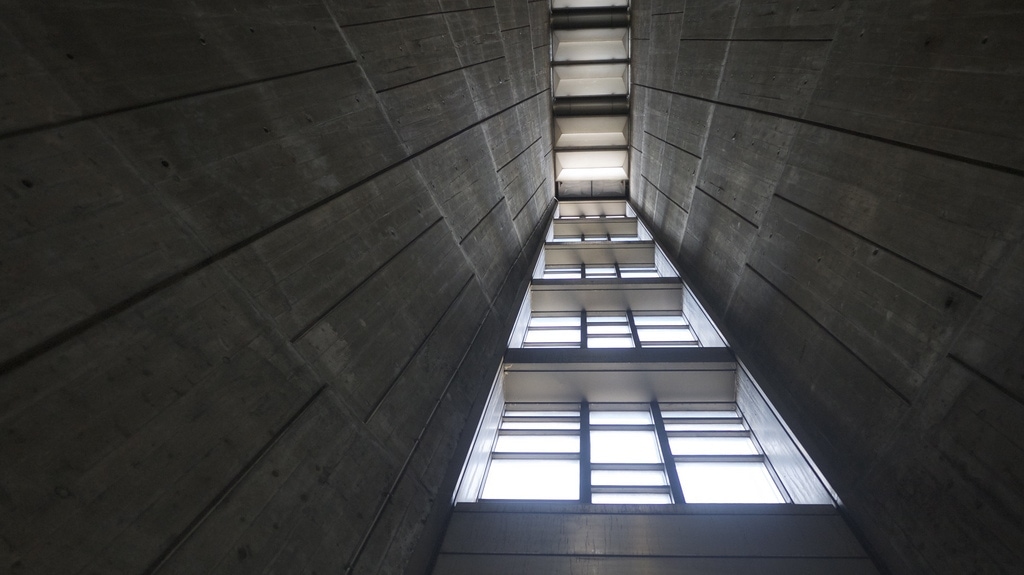
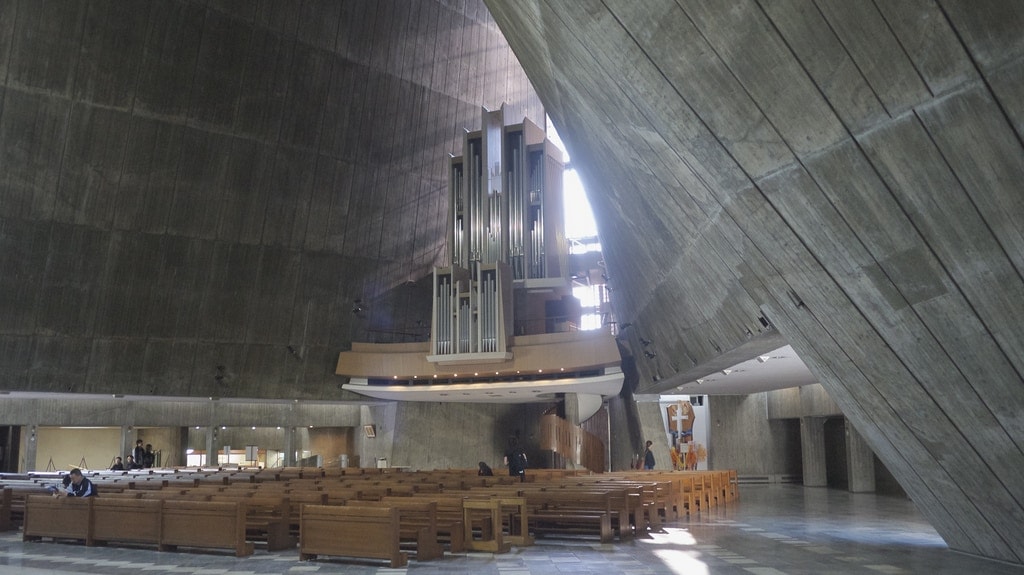
The vast converging walls create an almost monastic feel to the space with the ever-changing light casting amazing shadows through the narrow windows, softening what might otherwise feel like an oppressive tomb.
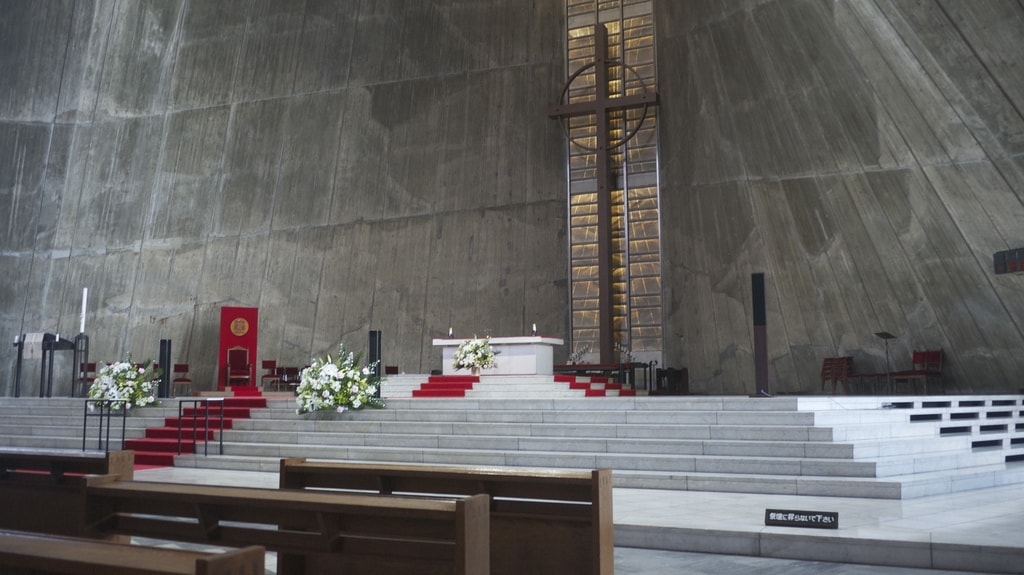
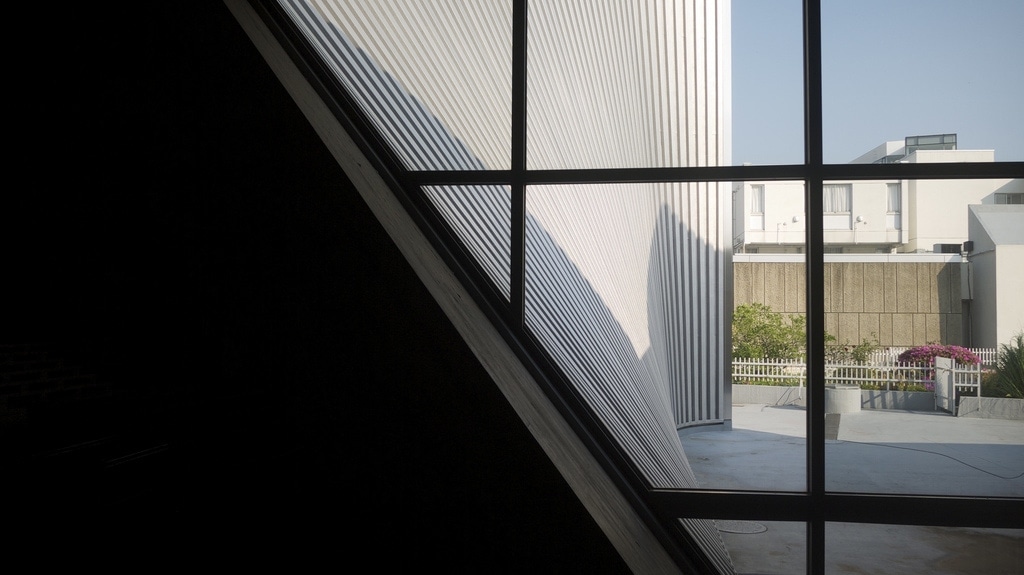
It’s not hard to feel spiritual in a place as unique as this.
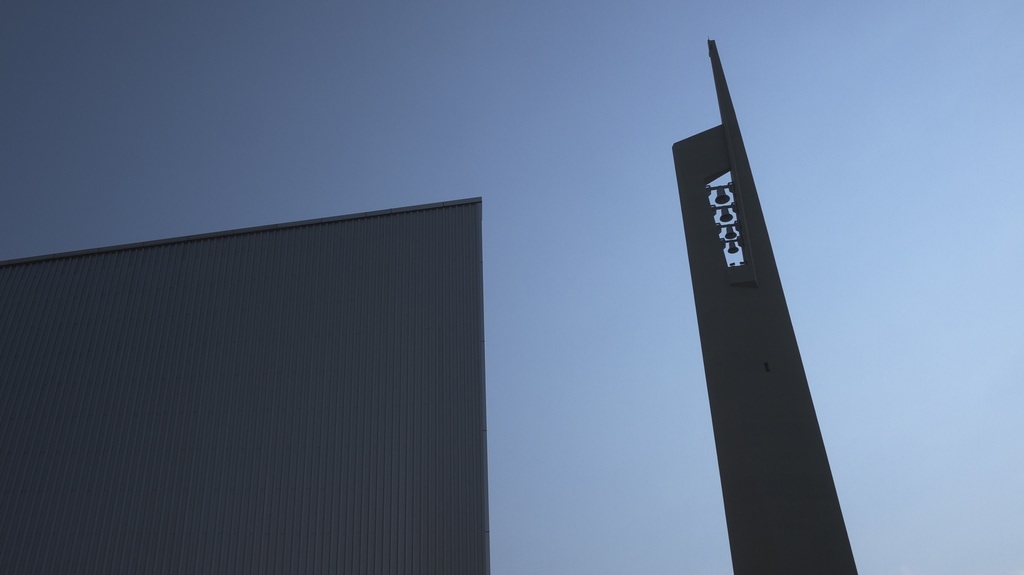
Outside a bell tower stands detached from the main building. Four vertical sides stretch into the sky, converging at a sharp point 60m high. Its hyperbolic sides mirror the main building and house four bells from Germany.
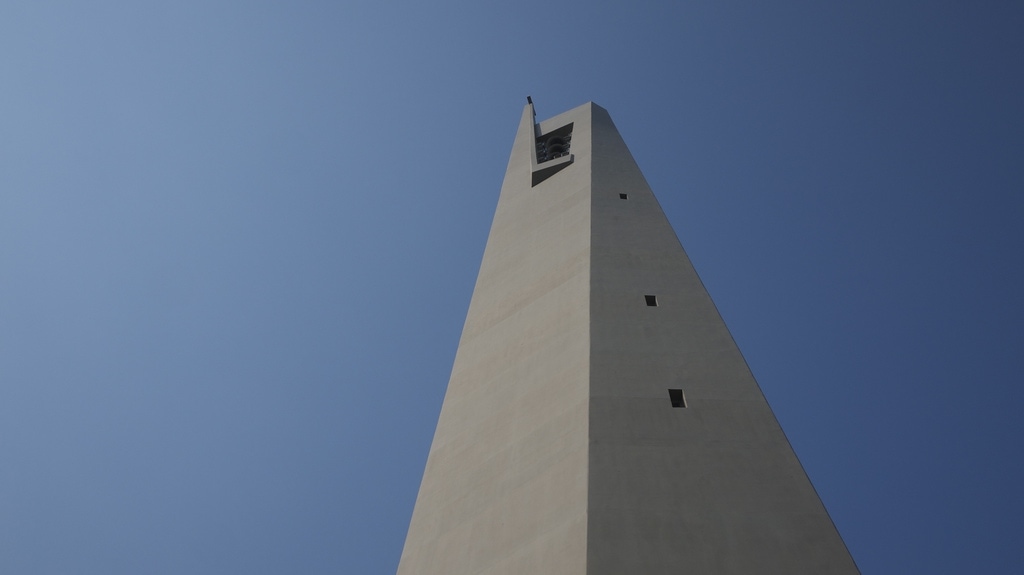
Fittingly when Kenzō Tange died in 2005 his funeral was held here, in what must surely be counted as one of his masterpieces and a timeless iconic example of modern Japanese design.

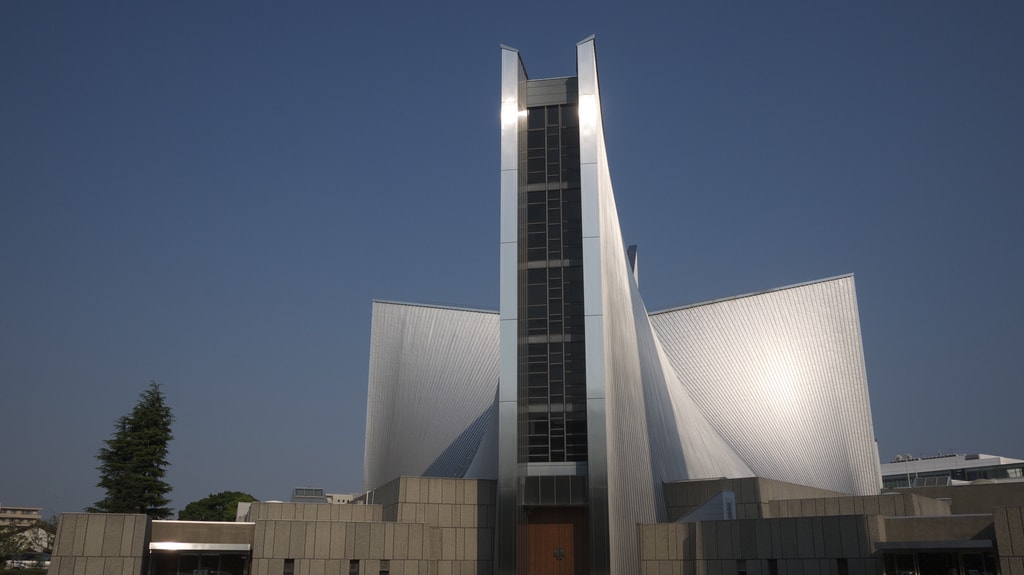
Reply